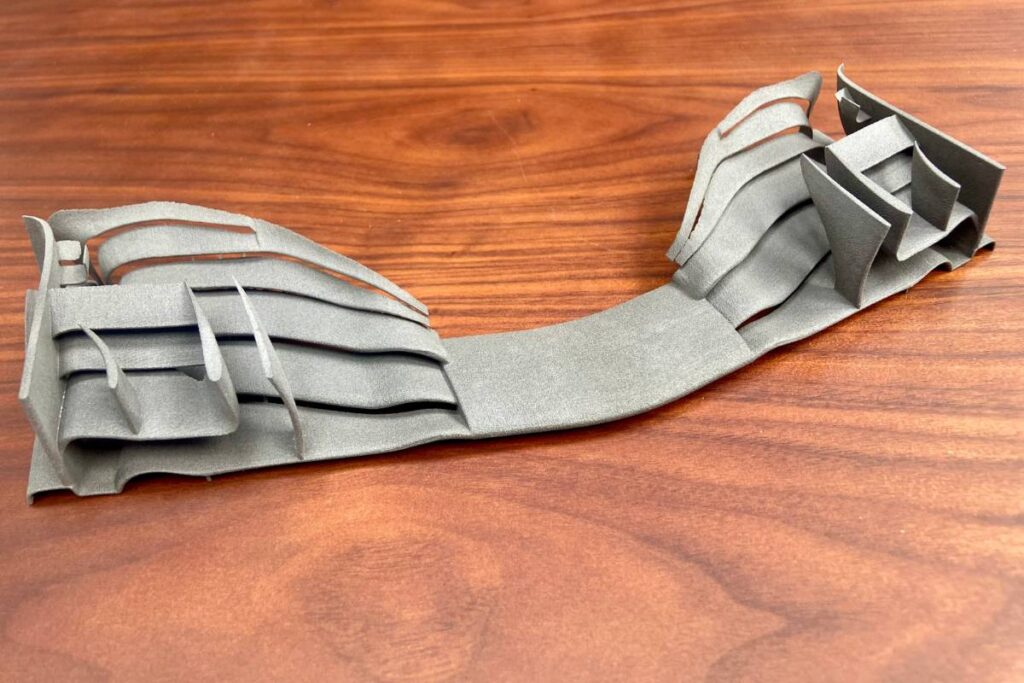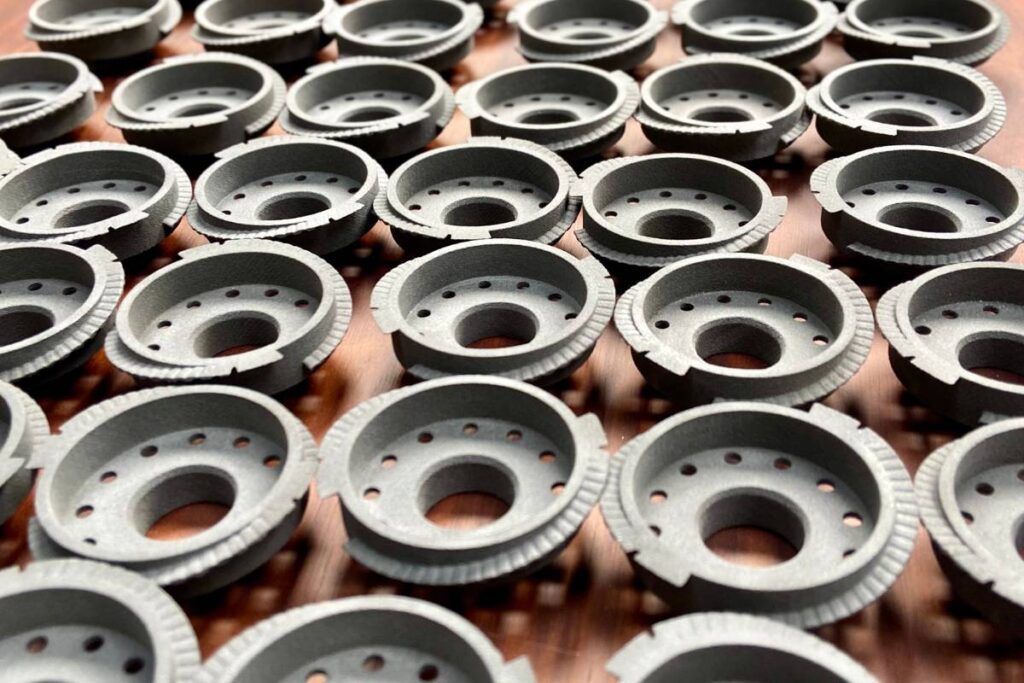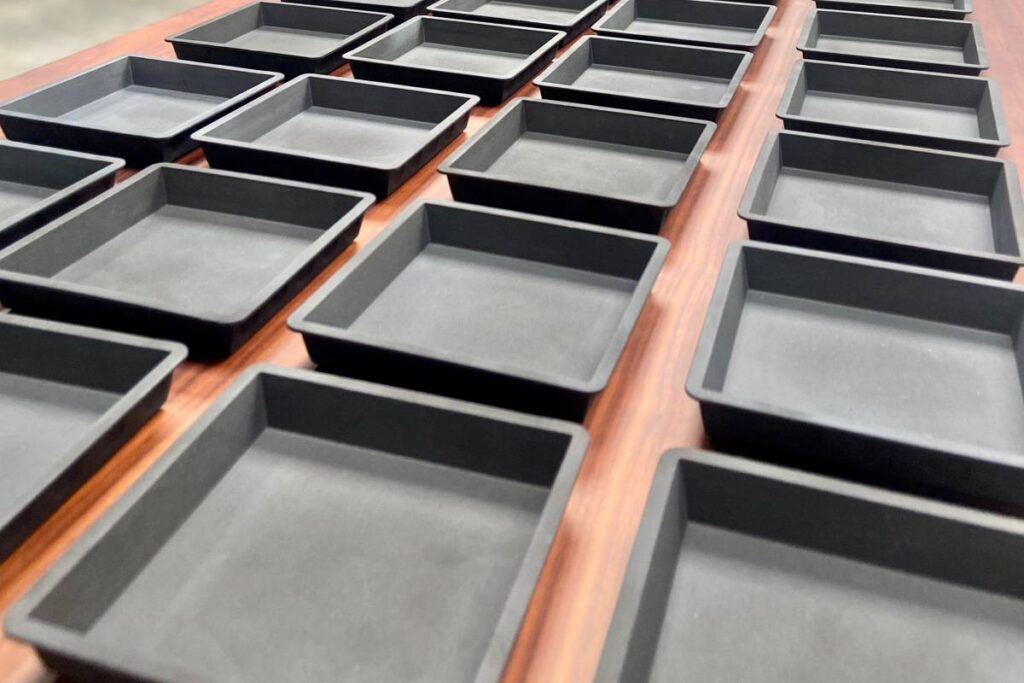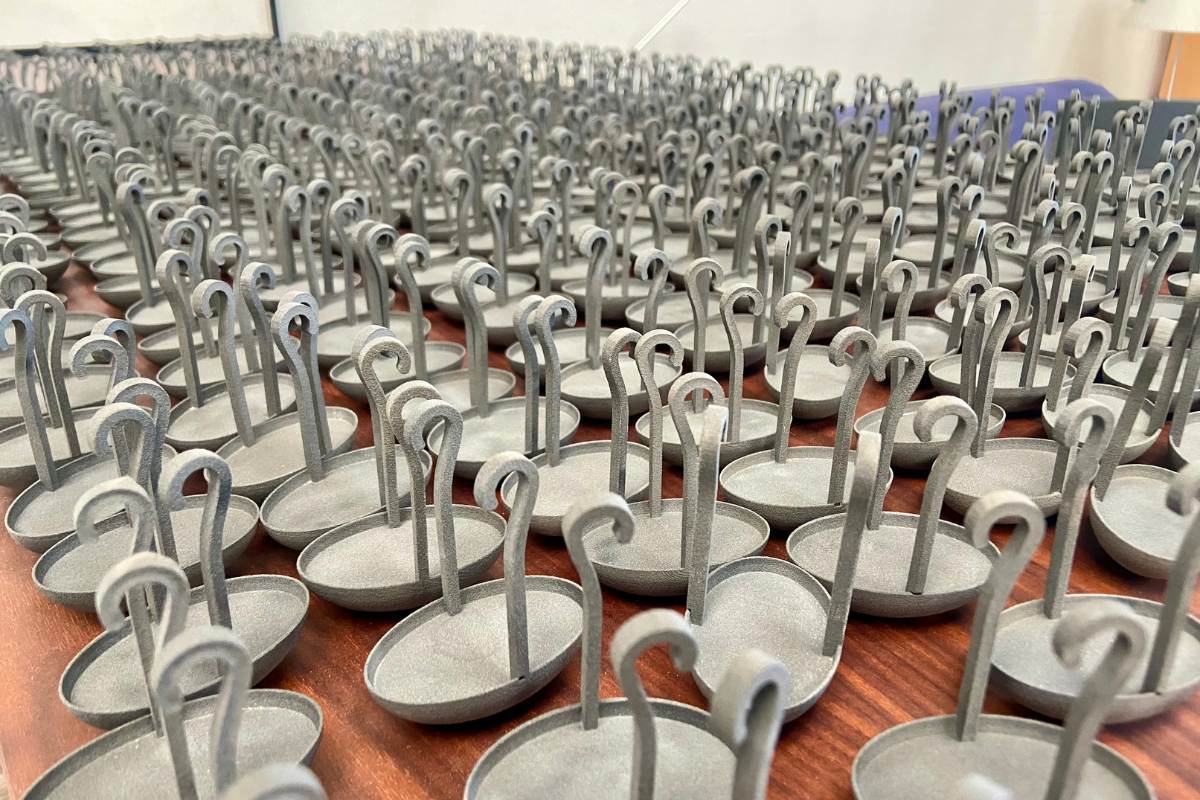In the world of industrial 3D printing, SLM and SLS are two of the most advanced and widely used technologies. Although their acronyms are similar, their processes, materials and applications have key differences that are worth knowing if you want to make the best decision for your company.
In this article I am going to explain to you, clearly and closely, what each technology consists of, what are their main differences, why in Additium 3D we bet for the SLS technology as the ideal choice for many industrial applications, and why the use of polyamides as the Nylon 12 has made this technique one of the most demanded in industrial sectors.
If you want a more technical and detailed overview, you can also have a look at our specialised site on SLS technologywhere we explain the whole process.
What is SLM technology?
SLM (Selective Laser Melting) technology is an additive manufacturing process that uses a powerful laser to completely melt metal powder, creating solid parts with high precision and strength.
This technology works with materials such as stainless steel, titanium, aluminium or cobalt-chromium, ideal for sectors that demand high precision, such as aerospace or medical.
What is SLS technology?

The SLS technology (from English Selective Laser Sintering or selective laser sintering) is an additive manufacturing process that uses a high-powered laser to fuse thermoplastic powder particles, primarily polyamides as the Nylon 12, layer by layer, until a solid piece is formed.
Unlike other 3D printing technologies, the unfused powder acts as a natural support, allowing complex parts to be printed without the need for additional structures. This, on an industrial level, is a brutal advantage: more efficiency, less wasted material and more design freedom.
If you want to to deepen the properties, applications and advantages of materials such as Polyamide 12 or PTFE with fibre, we invite you to read this complete guide to 3D printing with Polyamide, where we explore in detail its uses and benefits in different sectors.
Who invented SLS technology?
SLS technology was developed in the 1980s by Carl Deckard while he was a student at the University of Texas at Austin. In collaboration with his professor Joe Beaman, they created one of the first working versions of the SLS system and founded the DTM Corporation, which was later acquired by 3D Systems.
This invention marked a turning point in the history of additive manufacturing, and today it is still one of the most widely used technologies in industrial environments due to its reliability, precision and mechanical quality.
Differences between SLS technology and SLM technology
One of the questions we get asked most frequently at Additium 3D is about the SLM and SLS technology. And although their acronyms are similar, they are different technologies in both process and application. Let's take a closer look at them:
Main differences between SLM and SLS
| Aspect | SLM technology | SLS Technology |
| Material | Metal powder (steel, titanium...) | Thermoplastic powder (polyamide) |
| Process | Total melting of the metal powder | Partial polymer sintering |
| Cost | High (material and machinery) | More accessible and affordable |
| Accuracy | Very high, micrometric tolerances | High, but oriented towards robust and functional parts |
| Security and environment | Requires controlled atmosphere, inert gases | Easier and safer handling |
| Typical applications | Medical implants, aerospace | Functional parts, prototypes and industrial plastic production |

1. Type of material used
SLS works mainly with polymersespecially polyamides such as Nylon 12.
SLM is designed to work with metals such as stainless steel, titanium, aluminium or cobalt-chrome.
This already makes a key difference: the end result is not only different in appearance and weight, but also in cost, strength and applications.
2. Physical process
At SLSthe laser sinter (partially melts) the powder particles so that they adhere to each other layer by layer.
At SLMthe laser melts completely the metal powder, creating a solid part in a similar way to how a metal part is forged.
SLS sintering involves less energy than full metal melting in SLM, which means less expensive equipment and more accessible processes for many companies.
3. Cost of production
SLS is usually more accessible in terms of operating costs, materials and equipment maintenance.
SLM implies higher costsThe price of the metal powder, the machinery and the environmental control required.
In addition, preparation and post-processing times for metal parts are longer in SLM, resulting in a much higher total cost per part.
4. Accuracy and tolerances
SLM offers very tight tolerances and surface finishes ideal for parts requiring high dimensional accuracy, such as medical implants or critical aerospace components.
SLSThe new machine, although it also offers high precision, is more intended for functional plastic parts that require robustness, but not necessarily micrometric tolerances.
5. Safety and working conditions
The metallic powder used in SLM is more reactive and dangerous to handle. Controlled atmospheres with inert gases (such as argon or nitrogen), specific protective equipment and strict safety measures are required.
At SLSpolymers such as Nylon 12 are safer to handle, making the process easier to implement in more flexible environments.
Why choose SLS technology for industrial 3D printing?
While SLM technology also offers impressive technical features, at Additium 3D we work closely with companies that need to produce robust, durable parts with complex geometries. And this is where the SLS technology shines with its own light:
- Functional parts without bracketsthanks to the unfused powder that supports complex geometries without the need for additional structures.
- Materials with excellent mechanical properties and thermal, chemical and mechanical resistance similar to injection moulded parts.
- Time and cost optimisationThis allows multiple parts to be printed at the same time and maximises productivity.
- Real design freedomno restrictions and no additional costs for media.
In addition, the use of the Nylon 12 in SLS offers a unique combination of rigidity, durability and chemical resistance that allows the manufacture of final parts, not just prototypes.
SLS technology and polyamide: the perfect combo

One of the most commonly used materials in SLS technology is the polyamideespecially the Nylon 12a thermoplastic that stands out for its rigidity, durability and chemical resistance.
The Nylon 12 allows parts to be manufactured that can be used directly as final components, without compromising functionality or strength.
At Additium 3D has been using SLS technology with polyamide, especially Nylon 12, for years, for its advantages:
- High impact and fatigue resistance
- Stability to humidity and temperature changes
- Resistance to chemicals, oils and fuels
- Biocompatibility
Therefore, when we talk about SLS polyamide technologyWe are talking about a professional solution that goes far beyond prototyping.
Why trust Additium 3D for your SLS parts?
You might think that this kind of technology is only available to large companies. But the reality is that in Additium 3D is committed to democratising access to industrial additive manufacturing.
We are one of the few companies in Spain with our own SLS 3D technology equipment, which allows us to control the entire process: from design, through printing, to final delivery. This gives us:
- Speed of deliveryBy not outsourcing, we can print faster and reduce lead times to a minimum.
- Competitive pricesFewer intermediaries, less added costs.
- Personalised attentionWe are close to you, we solve doubts and we accompany you in every step of the process.
If you have a CAD file ready, we can give you a quote in less than 24 hours. And if you don't, we can also help you design it. It's as easy as that.
SLS technology is here to stay
The SLS technology has ceased to be a novelty and has become an essential tool in industrial manufacturing. If you work in a company that needs functional prototypes, customised parts or short runs with professional quality, this technology can be your great ally.
And if you are looking for a partner with experience, its own equipment and a close relationship, at Additium 3D is happy to help you transform your industrial production. Write to us and tell us what you need.







